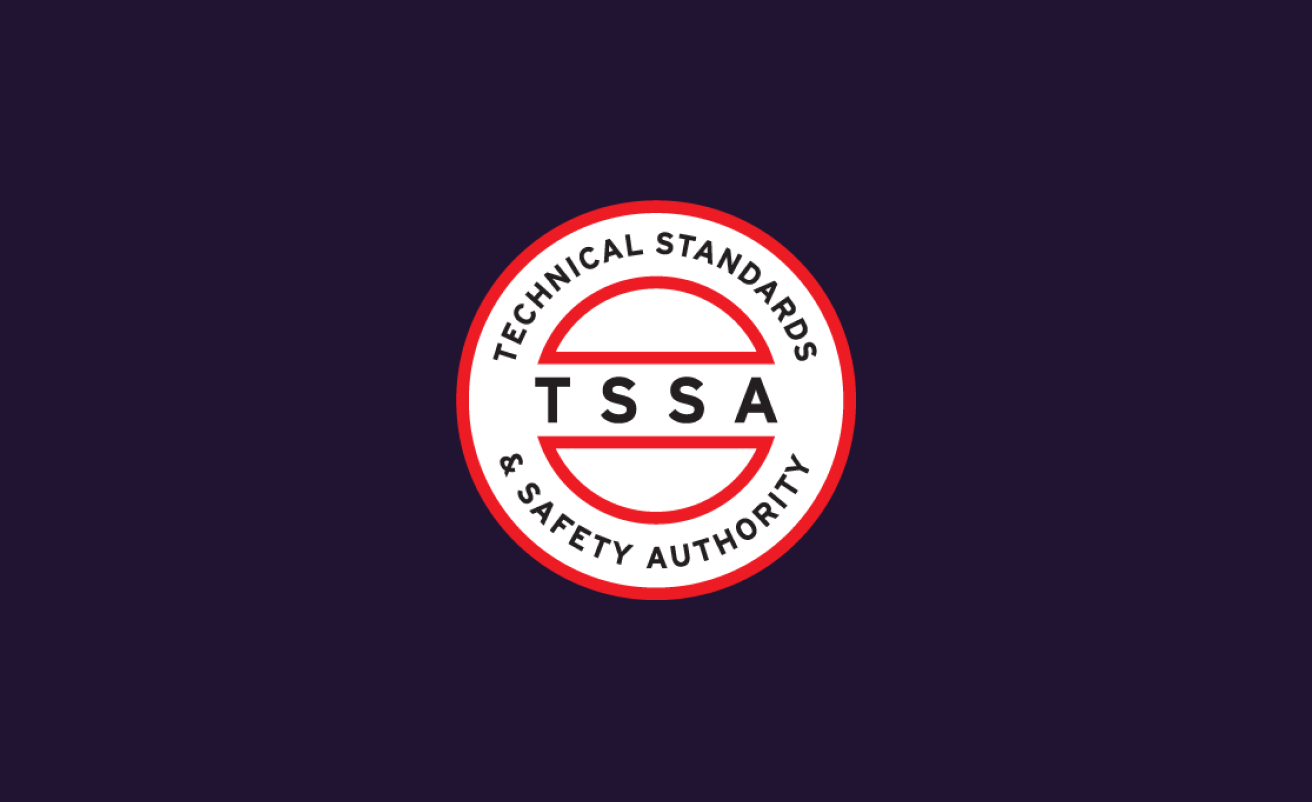
The Propane Compliance Standard came into effect on April 14, 2025, for all licensed propane-filling facilities in Ontario.
The Propane Compliance Standard seeks to enhance the safety of propane facilities across Ontario by:
- Prioritizing high-risk non-compliances that pose significant safety risks: Help owners, contractors and mechanics understand safety priorities by directing their focus on addressing high-risk non-compliances.
- Promoting inspection consistency: Inspection orders are based on risk and data analyses from inspection and incident history, ensuring standardized and consistent inspections.
The Technical Standards and Safety Authority (TSSA) will apply this standard during periodic inspections to enhance safety and regulatory consistency. If high-risk non-compliances are found during a periodic inspection, TSSA will:
- Issue an order(s) requiring corrective action
- Conduct a follow-up inspection to confirm compliance
- If compliance is not confirmed within the specified time, further enforcement action will be taken, including possible shutdown
High-risk non-compliances may require immediate compliance (0 days), could result in a shutdown, or allow 14 days to rectify the issues. In some cases, a high-risk non-compliance may be given more than 14 days to resolve, depending on practical considerations and circumstances.
Other violations, categorized as safety tasks (low- and medium-risk), will be noted on the inspection report. Owners and operators are responsible for resolving safety tasks within the time specified in the inspection report. TSSA will not conduct a follow-up inspection if only safety tasks are found during a periodic inspection.
Below is a list of high-risk non-compliances in the Propane Compliance Standard:
| Issue | Compliance Order | Regulation/Code Clause |
| The facility must be licensed. | Rectify | Section 13(1) of O.Reg 211/01 |
| The facility must be operated in accordance with its Risk and Safety Management Plan (RSMP). | Rectify | Section 3.1(0.1)(d) of O. Reg. 211/01 |
| Employees must hold a valid Record of Training (ROT) to transfer products. | Cease-and-desist | Section 6(1) of O. Reg. 211/01 |
| Employees must be trained in the facility’s emergency procedures. | Rectify | Section 27(9)(a) of O. Reg. 211/01 |
| Facilities must have operational and maintenance procedure manuals. | Rectify | Clause 7.22.4 of CAN/CSA-B149.2 Code |
| An inspection must be conducted by the fuel supplier in the past 12 months. | Rectify | Section 29(1) of O. Reg. 211/01 |
| Tanks and cylinders must be protected from vehicular impact. | Rectify | Clause 5.3.2 of CAN/CSA-B149.2 Code |
| The area around the tanks and cylinders must be clear of readily ignitable materials (such dry grass, weeds, paper, cardboard and firewood). | Rectify | Clause 5.3.3 of CAN/CSA-B149.2 Code |
| Access must be provided for firefighting personnel. | Rectify | Clause 7.12.2 of CAN/CSA-B149.2 Code |
| The emergency electrical shut-off switch must be clearly identified, readily accessible and operational. | Rectify | Clause 7.19.1.7 of the CAN/CSA-B149.2 Code |
| Hoses must be in good condition. | Rectify | Clause 5.9 of CAN/CSA-B149.2 code |
| Equipment at the facility must be approved. | Rectify | Clause 4.2.1 of CAN/CSA-B149.2 Code |
| Liquid piping must be installed with hydrostatic relief valve(s) between shut-off valve(s). | Rectify | Clause 5.6.1 of CAN/CSA-B149.2 Code |
| Hydrostatic relief valve(s) must discharge away from the tank or cylinder. | Rectify | Clause 5.8.3 of CAN/CSA-B149.2 Code |
| The tank inspection must be conducted every 10 years. | Rectify | Clause 1.6 of Propane Code Adoption Document |
| Pressure relief valves must be inspected every 5 years. | Rectify | Clause 1.7 of Propane Code Adoption Document |
| Relief valve(s) must be protected with loose-fitting cap(s). | Rectify | Clause 7.2.5 of CAN/CSA-B149.2 Code |
| The facility must be equipped with an emergency shut-off valve and/or a back-check valve. | Rectify | Clause 7.3.5 of CAN/CSA-B149.2 Code |
| Tanks must have an excess flow valve or a back-check valve. | Rectify | Clause 7.4.1 of CAN/CSA-B149.2 Code |
| Tanks must be equipped with liquid level gauges. | Rectify | Clause 7.6.1 of CAN/CSA-B149.2 Code |
| Tank relief vents must extend vertically upwards, unobstructed to the outdoors with no impingement on any other tank. | Rectify | Clause 7.9.5 of CAN/CSA-B149.2 Code |
| Portable storage at the facility must not exceed the allowed capacity of the RSMP. | Rectify | Section 3.1(7) of O.Reg 211/01 |
| Container filling locations with container storage must meet these required clearances: 10ft (3 m) from a tank, 25ft (7.5 m) from a property line, and 25ft (7.5 m) from any source of ignition. | Rectify | Clause 7.17.1 of CAN/CSA-B149.2 |
| Cylinders must be stored in an upright position. | Rectify | Clause 6.1.8 of CAN/CSA-B149.2 Code |
| Required fencing must meet code requirements. | Rectify | Clause 7.19.2 of CAN/CSA-B149.2 Code |
| Relief valve(s), gauging device(s), bypass line(s) and filler valve(s) must be located inside the cabinet when the doors are closed. | Rectify | Clause 7.19.3(a) of CAN/CSA-B149.2 Code |
| The internal safety valve must be in a closed position when the cabinet door is closed. | Rectify | Clause 7.19.3(b) of CAN/CSA-B149.2 Code |
| Vehicle dispenser hose(s) must be equipped with breakaway couplings. | Rectify | Clause 7.20.9 of CAN/CSA-B149.2 Code |
Visit the Propane Compliance Standard webpage for more information or watch a recording of the webinar on Propane Compliance Standard held on March 25, 2025.
This news item was sent to propane facility owners and operators, Propane Compliance Standard webinar attendees, and Fuels web subscribers.